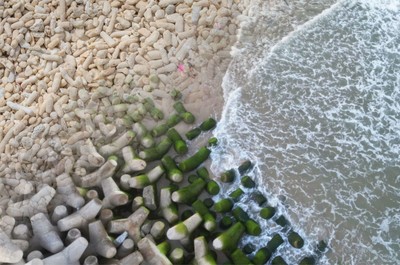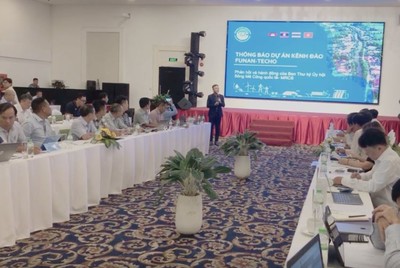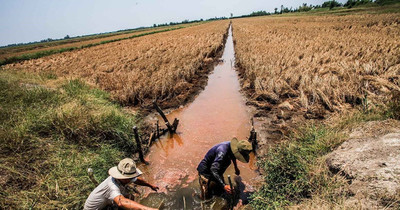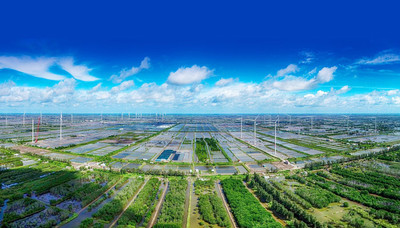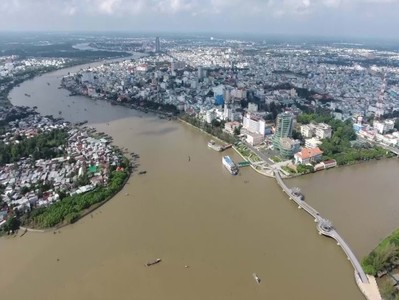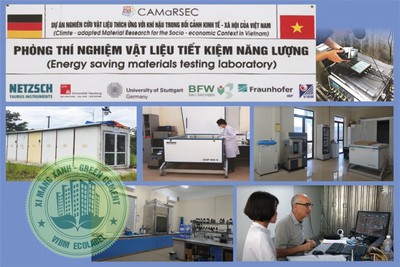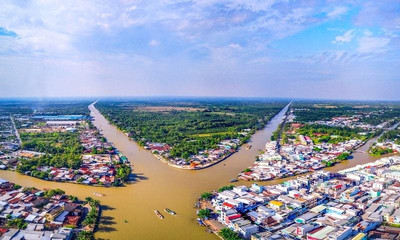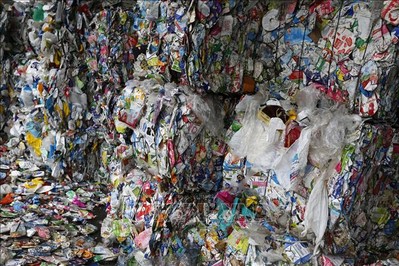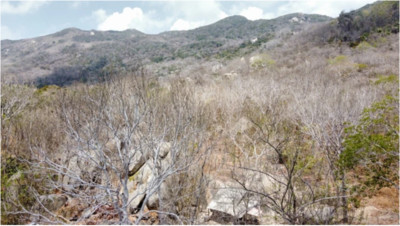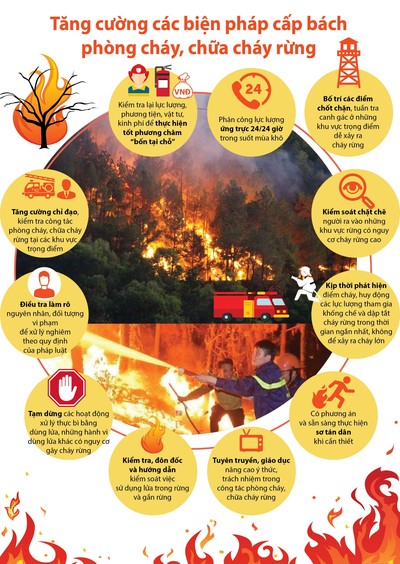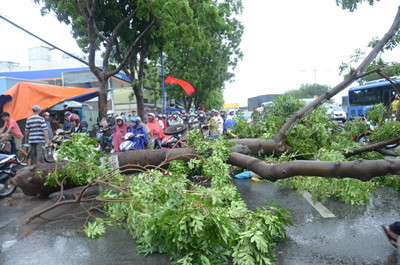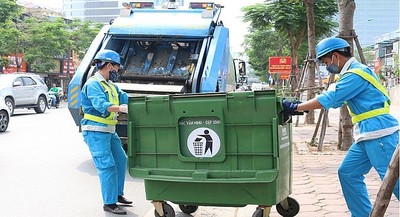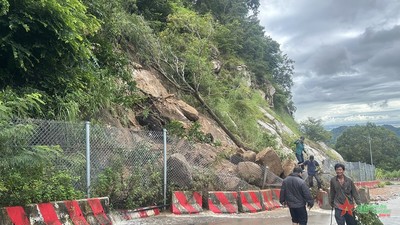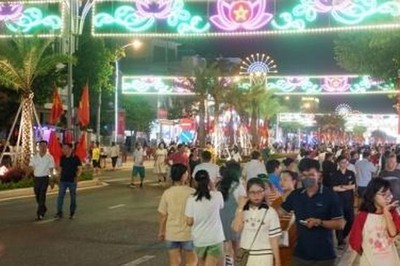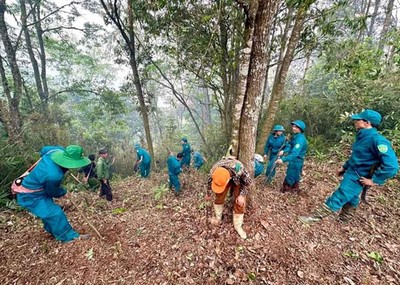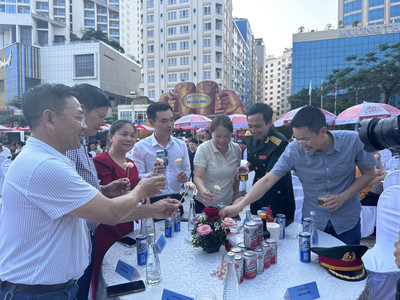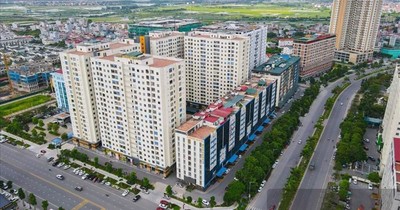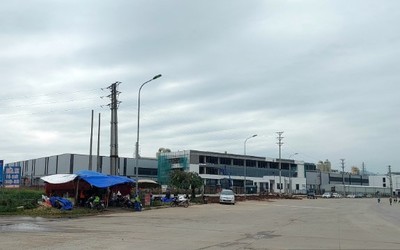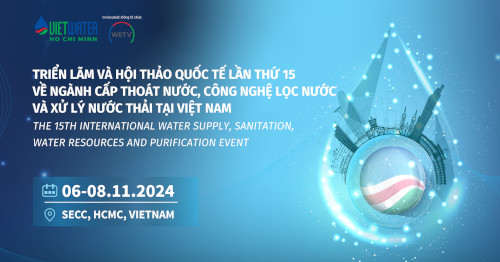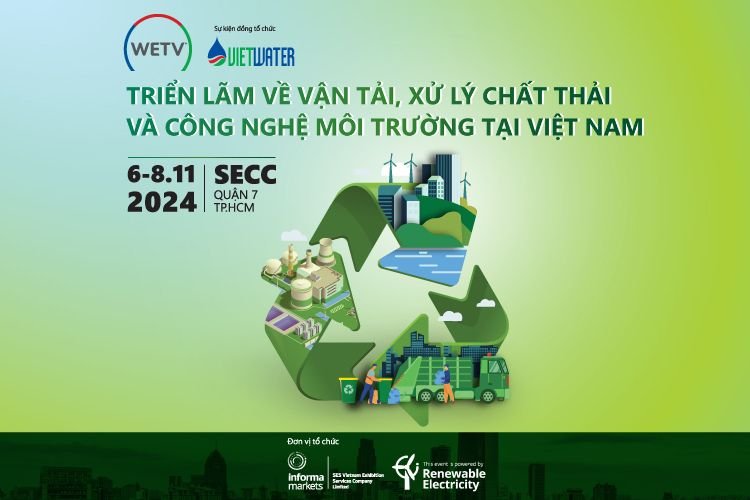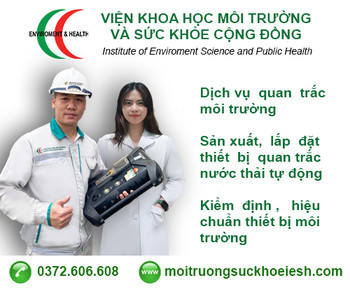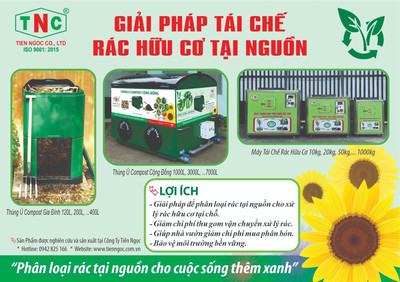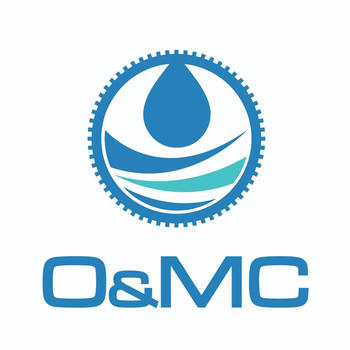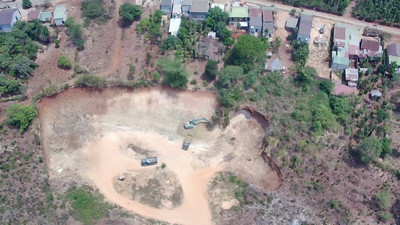Công bố quốc tế lĩnh vực môi trường số 23-2023
Trân trọng giới thiệu tới quý độc giả Công bố quốc tế lĩnh vực môi trường số 23-2023 với những nội dung chính như sau:
Về quản lý môi trường
- Gánh nặng sinh non toàn cầu, khu vực và quốc gia do PM2.5 trong môi trường xung quanh và hộ gia đình từ năm 1990 đến năm 2019: Xấu đi hay cải thiện?
- Chất thải y tế ở Bangladesh: Hiện trạng, tác động của Covid-19 và quản lý bền vững với vòng đời và khuôn khổ kinh tế tuần hoàn.
- Theo dõi ô nhiễm hạt vi nhựa trong nước uống ở Zahedan, Iran: Từ nguồn đến vòi tiêu thụ.
- Sự phân tầng và hậu quả của nó ở hai vùng đất ngập nước mưa đô thị được xây dựng.
- Phân tích tác động môi trường tiềm ẩn của danh mục thuốc độc hại NIOSH (nhóm 2).
- Đóng góp của các dòng sông theo quốc gia cụ thể vào ô nhiễm nhựa biển.
- Mối liên hệ giữa nhiệt độ môi trường và ô nhiễm không khí với tỷ lệ tử vong do tự sát và giết người ở California: Một nghiên cứu chéo trường hợp trên toàn tiểu bang.
- Lập mô hình phơi nhiễm chất ô nhiễm môi trường lịch sử và nguy cơ ung thư hạch không Hodgkin.
- Quản lý bền vững chất thải thực phẩm; các chiến lược tiền xử lý, đánh giá kinh tế kỹ thuật, phân tích thư mục và các ứng dụng tiềm năng: Đánh giá có hệ thống.
Về môi trường đô thị
- Thời lượng nắng và nguy cơ nhập viện do bệnh tâm thần phân liệt ở khu vực đô thị chính: Môi trường xây dựng có làm thay đổi mối liên hệ không?
- Khái niệm mới và phương pháp định lượng của lần xả đầu tiên trong các lưu vực đô thị: Một nghiên cứu mô hình hóa.
- Đánh giá khả năng gây ra stress oxy hóa và tiềm năng oxy hóa của PM2.5 tại các thành phố phía đông và phía tây Nhật Bản.
- Khai thác đô thị từ sinh khối, nước muối, bùn thải, phosphogypsum và chất thải điện tử để giảm ô nhiễm môi trường: Hiện trạng sẵn có, tiềm năng và công nghệ tập trung vào LCA và TEA.
- Bức xạ tia cực tím và ô nhiễm không khí là nguyên nhân của các tình trạng tự miễn dịch chính.
- Đánh giá VOC từ các chủng nấm, vật liệu cách nhiệt tòa nhà và không khí trong nhà bằng mũi tên vi chiết pha rắn, giải hấp nhiệt-sắc ký khí khối phổ và phương pháp học máy.
- Đánh giá vòng đời của nguồn cung cấp thực phẩm đô thị: Những phát hiện và đề xuất chính từ một nghiên cứu điển hình về khu vực đô thị của Pháp.
- Tác động của con người đối với ô nhiễm nitrat ở một dòng sông đô thị: Những hiểu biết sâu sắc từ sự kết hợp của các đồng vị phong phú tự nhiên và các cặp đồng vị.
- Giám sát dựa trên nước thải cho thấy xu hướng thời gian-không gian địa lý đối với mầm bệnh kháng kháng sinh trong một cộng đồng đô thị lớn.
Về môi trường khu công nghiệp
- Cơ chế kết hợp cacbon đen và khoáng từ tính trong tro bay nhà máy điện.
- Than sinh học biến tính được điều chế từ Retinervus luffae fructus để hấp phụ thuốc nhuộm và tạo hạt bùn hiếu khí.
- Xử lý sinh học tăng cường chất hoạt động bề mặt đối với đất bị ô nhiễm dầu mỏ và phản ứng của cộng đồng vi sinh vật: Một nghiên cứu thực địa.
- Chuyển đổi xanh bền vững chất thải gangue than đá thành chất hấp phụ silicat đa kim loại xốp hiệu quả về chi phí cho phép loại bỏ Cd(II) và thuốc nhuộm siêu hiệu quả.
- Tổng hợp tại chỗ AuNPs/PPy/Ti3C2Tx dựa trên cảm biến điện hóa aptasensor không nhãn để phát hiện siêu nhạy các ion chì dưới dạng chất gây ô nhiễm nguy hiểm trong chất lỏng môi trường.
- Cái nhìn sâu sắc mới về cơ chế địa hóa và hành vi của kim loại nặng trong đất và bụi rơi xuống của một nhà máy luyện đồng điển hình.
- Đánh giá kinh tế chuyển đổi linh hoạt tại các nhà máy nhiệt điện than liên kết đa giá.
- Các động lực chính của quá trình khử cacbon trong ngành dệt may trong EU-27.
- Phân hủy thuốc nhuộm Rhodamine B bằng cách sử dụng carbon có nguồn gốc từ khẩu trang đã qua sử dụng kết hợp với peroxymonosulfate.
- Hành vi loại bỏ và ổn định asen của schwertmannite@BC (Sch@BC) trong môi trường kép bị ô nhiễm (nước/đất): Thông qua trao đổi sulfat và tạo phức hợp hóa học.

Xin trân trọng giới thiệu!
QUẢN LÝ MÔI TRƯỜNG
1. Global, regional, and national burden of preterm birth attributable to ambient and household PM2.5 from 1990 to 2019: Worsening or improving?
Science of The Total Environment, Volume 871, 1 May 2023, 161975
Abstract
Background
Maternal exposure to fine particular matter (PM2.5) during pregnancy, including ambient and household PM2.5, has been linked with increased risk of preterm birth (PTB). However, the global spatio-temporal distribution of PTB-related deaths and disability-adjusted life years (DALYs) attributable to PM2.5 is not well documented. We estimated the global, regional, and national patterns and trends of PTB burden attributable to both ambient and household PM2.5 from 1990 to 2019.
Methods
Based on the Global Burden of Disease Study (GBD) 2019 database, we obtained the numbers of deaths and DALYs as well as age-standardized mortality rate (ASMR) and age-standardized DALY rate (ASDR) of PTB attributable to total, ambient, and household PM2.5 by socio-demographic index (SDI) and sex during 1990–2019. The average annual percentage changes (AAPCs) were calculated to assess the temporal trends of attributable burdens.
Results
In 2019, 126,752 deaths and 11.3 million DALYs related to PTB worldwide (two-thirds in Western Sub-Saharan Africa and South Asia) could be caused by excess PM2.5 above the theoretical minimum-risk exposure level (TMREL), of which 39 % and 61 % were attributable to ambient PM2.5 and household PM2.5, respectively. From 1990 to 2019, the global ASMR due to ambient PM2.5 increased slightly by 7.08 % whereas that due to household PM2.5 decreased substantially by 58.81 %, although the latter still dominated the attributable PTB burden, especially in low and low-middle SDI regions. Similar results were also observed for ASDRs. In addition, PTB burden due to PM2.5 was higher in male infants and in lower SDI regions.
Conclusions
Globally in 2019, PM2.5 remains a great concern on the PTB burden, especially in Western Sub-Saharan Africa and South Asia. Between 1990 and 2019, age-standardized burden of PTB due to ambient PM2.5 increased globally, while that due to household PM2.5 decreased markedly but still dominated in low and low-middle SDI regions.
2. Healthcare waste in Bangladesh: Current status, the impact of Covid-19 and sustainable management with life cycle and circular economy framework
Science of The Total Environment, Volume 871, 1 May 2023, 162083
Abstract
COVID-19 has accelerated the generation of healthcare (medical) waste throughout the world. Developing countries are the most affected by this hazardous and toxic medical waste due to poor management systems. In recent years, Bangladesh has experienced increasing medical waste generation with estimated growth of 3 % per year. The existing healthcare waste management in Bangladesh is far behind the sustainable waste management concept. To achieve an effective waste management structure, Bangladesh has to implement life cycle assessment (LCA) and circular economy (CE) concepts in this area. However, inadequate data and insufficient research in this field are the primary barriers to the establishment of an efficient medical waste management systen in Bangladesh. This study is introduced as a guidebook containing a comprehensive overview of the medical waste generation scenario, management techniques, Covid-19 impact from treatment to testing and vaccination, and the circular economy concept for sustainable waste management in Bangladesh. The estimated generation of medical waste in Bangladesh without considering the surge due to Covid-19 and other unusual medical emergencies would be approximately 50,000 tons (1.25 kg/bed/day) in 2025, out of which 12,435 tons were predicted to be hazardous waste. However, our calculation estimated that a total of 82,553, 168.4, and 2300 tons of medical waste was generated only from handling of Covid patients, test kits, and vaccination from March 2021 to May 2022. Applicability of existing guidelines, and legislation to handle the current situation and feasibility of LCA on medical waste management system to minimize environmental impact were scrutinized. Incineration with energy recovery and microwave sterilization were found to be the best treatment techniques with minimal environmental impact. A circular economy model with the concept of waste minimizaton, and value recovery was proposed for sustainable medical waste management. This study suggests proper training on healthcare waste management, proposing strict regulations, structured research allocation, and implementation of public-private partnerships to reduce, and control medical waste generation for creating a sustainable medical waste management system in Bangladesh.
3. Stratification and its consequences in two constructed urban stormwater wetlands
Science of The Total Environment, Volume 872, 10 May 2023, 162179
Abstract
Stratification in constructed urban stormwater wetlands is one of the fundamental physical processes that affect hydrodynamics, transport and fate of stormwater pollutants. Adverse effects of stratification include decreasing pollutant retention capacity, causing the water at lower depths to become anoxic, degrading water quality and increasing stress on the downstream aquatic communities. The current study reports on a comprehensive field monitoring program of stratification and hydrodynamics in two ice-free seasons (May – October) in two constructed urban stormwater wetlands in Calgary, Canada, with different inlet, outlet, morphometric and vegetation designs. Despite their small sizes of 0.5 and 1.2 ha and shallow water depths of 0.8 m, stratification was strong and persistent in the wetlands. The response of stratification and mixing to atmospheric forcings (e.g., air temperature, atmospheric instability, rainfall depth, wind speed) and the impact of design characteristics (inlet/outlet design, water depth, surface area and aquatic vegetation) were examined and discussed. Thermal stratification, defined as a vertical temperature gradient >1 °C/m, was found to be significantly higher (up to ten times) near the inlets and last longer (up to twice) than in the main cells and the outlet basins due to the relatively cold summer inflows. The wetland with twice the permanent water volume and surface area and half the length-to-width ratio had denser submerged aquatic vegetation, higher (by up to 2 °C) water temperature and more severe (up to eight times) thermal stratification. Strong densimetric stratification and low wind stress on the water surface caused hypoxic conditions near the bed, potentially adversely affecting water quality and downstream aquatic communities.
4. Tracking microplastics contamination in drinking water in Zahedan, Iran: From source to consumption taps
Science of The Total Environment, Volume 872, 10 May 2023, 162121
Abstract
Microplastics (MPs) that pollute drinking water are inherently toxic, act as an adsorbent of hazardous pollutants, and threaten human health. So, the fate of microplastics in drinking water from the source to consumption taps (CTs) was assessed in spring and winter in Zahedan city in Iran. Sampling was performed from 4 reservoirs (raw water), before and after two water treatment plants (WTPs), and 10 CTs. The reservoirs were sampled using a plankton net (pore size = 100 μm), and the remaining samples were taken using a sampling device (containing a stainless steel membrane as a filter with pore size = 5 μm). The combination of density separation techniques, digestion, observation, Micro-Raman and FTIR, and SEM analysis was performed to recognize MPs. The average number of MPs in raw water varied between 15.4 and 44.7 MP/m3 (winter) and 22–51.8 MP/m3 (spring). The results before and after the treatment plant showed that about 64 % and 75 % of particles were eliminated in WTP1 and WTP2, respectively. The average number of MPs in CTs was more than treatment water (CTa = 85–390 MP/m3 and CTb = 75–400 MP/m3), which is a probable confirmation of secondary contamination (abrasion from pipes, installations, and sealing materials). The dominant type of polymer detected in raw water, treated water, and consumption taps were PS. The estimated daily intake for children and adults was about 0.16–15 MP/kg/bw/year and 0.07–5.7 MP/kg/bw/year, respectively. The surface morphology of MPs showed that the particles were affected by continuous weathering, mechanical breakage, and oxidation. MPs threaten the environment and human health due to the adsorption and transport of hazardous pollution and their intrinsic toxicity, so a solution must be thought of to prevent the pollution of drinking water by MPs.
5. Analyzing the potential environmental impact of NIOSH list of hazardous drugs (group 2)
Science of The Total Environment, Volume 873, 15 May 2023, 162280
Abstract
For the first time, several pharmaceuticals have been defined as priority substances in the new proposal of the revision of the Water Framework Directive (WFD). Consequently, environmental quality standards have been determined for several drugs. This is the case with the antiepileptic carbamazepine, which is considered as hazardous in healthcare settings by The National Institute for Occupational Safety and Health (NIOSH). This organism considers as such drugs that have shown teratogenicity, carcinogenicity, genotoxicity or other developmental, reproductive, or organ toxicity at low doses in studies with animals or humans.
This study has been focused on the non-carcinogenic drugs classified in group 2, and their presence in the environment. This group contains many different therapeutic agents such as antineoplastics, psychoactive drugs, immunosuppressants and antivirals, among others.
Of the 116 drugs included in the list, 26 have been found in aquatic environmental matrices. Certain drugs have received most attention (e.g., the antiepileptic carbamazepine, progesterone and the antidepressant paroxetine) while others completely lack environmental monitoring. Carbamazepine, fluconazole, paroxetine and warfarin have been found in invertebrates' tissues, whereas carbamazepine, oxazepam and paroxetine have been found in fish tissues.
The main aim of the NIOSH's hazardous drug list is to inform healthcare professionals about adequate protection measures to prevent occupational exposure to these pharmaceuticals. However, this list contains useful information for other professionals and researchers such as environmental scientists. The paucity of relevant environmental data of certain hazardous pharmaceuticals might be important to help in the prioritization of compounds that may demand further research.
6. Ambient temperature and air pollution associations with suicide and homicide mortality in California: A statewide case-crossover study
Science of The Total Environment, Volume 874, 20 May 2023, 162462
Abstract
Background
Higher ambient temperature and air pollution may contribute to increased risk of behaviors harmful to oneself or to others; however, quantitative evidence is limited. We examined the relationship of deaths due to suicide and homicide with temperature and air pollution in California—a state prone to high levels of both exposures.
Method
California death certificates from 2014 to 2019 were used to identify deaths due to suicide and homicide. Residential data for decedents were used to assign exposure to daily temperature (maximum[Tmax], minimum[Tmin]) and daily average air pollution concentrations (particulate matter <10 μm[PM10] and < 2.5 μm[PM2.5], nitrogen dioxide[NO2], ozone[O3]). Tmin served as a surrogate for nighttime temperature. A time-stratified case-crossover study design using conditional logistic regression was used to assess the effects of daily exposure to temperature and air pollutants on suicide and homicide mortality, adjusting for relative humidity. Effect modification by sex and age was assessed.
Results
We observed 24,387 deaths due to suicide and 10,767 deaths due to homicide. We found a monotonic temperature association for both outcomes. A 5 °C increase in Tmax at lag-2 and Tmin at lag-0 was associated with 3.1 % (95 % confidence interval [CI]: 1.1 %–5.2 %) and 3.8 % (95%CI: 0.9 %–6.8 %) increased odds of death due to suicide, respectively. The increased odds of homicide mortality per 5 °C increase in Tmax at lag-0 and Tmin at lag-1 were 4.9 % (95%CI: 1.6 %–8.1 %) and 6.2 % (95%CI: 1.6 %–11.0 %), respectively. No air pollutant associations were statistically significant. Temperature associations were robust after adjustment for PM2.5. Some temperature effects were larger among women for suicide and men for homicide mortality, and among those over age 65 years for both outcomes.
Conclusion
Risk of suicide and homicide mortality increases with increasing daily ambient temperatures. Findings have public health relevance given anticipated increases in temperatures due to global climate change.
7. Country-specific riverine contributions to marine plastic pollution
Science of The Total Environment, Volume 874, 20 May 2023, 162552
Abstract
Marine plastic debris are mainly derived from land-based sources, and the transport of plastics via global rivers is of great concern. Ample efforts have been made in estimating the land-based contributions of plastic to the global oceans, but quantifying country-specific (and per capita) riverine outflows is an important step toward the development of a globally integrated framework to mitigate marine plastic pollution. To estimate the country-specific riverine contributions to global marine plastic pollution, we built a River-to-Ocean model framework. In 2016, the median annual country-specific riverine plastic outflows and related per capita values for 161 countries varied between 0.76 and 103,000 metric tons (MT) and 0.83–248 g, respectively. India, China, and Indonesia were the top three contributors to riverine plastic outflows, whereas Guatemala, Philippines, and Colombia had the highest per capita riverine plastic outflows. The total riverine plastic outflow from 161 countries was in the range of 0.15–0.53 million MT annually, accounting for 0.4 %–1.3 % of the 40 million MT plastic waste generated yearly by more than seven billion humans. Population, plastic waste generation, and Human Development Index are the dominant factors influencing riverine plastic outflows to global oceans from individual countries. Our findings provide an important basis for launching effective plastic pollution management and control measures in global countries.
8. Convergence and divergence emerging in climatic controls of polynomial trends for northern ecosystem productivity over 2000–2018
Science of The Total Environment, Volume 874, 20 May 2023, 162425
Abstract
Recent rapid warming has caused uneven impacts on the composition, structure, and functioning of northern ecosystems. It remains unknown how climatic drivers control linear and non-linear trends in ecosystem productivity. Based on a plant phenology index (PPI) product at a spatial resolution of 0.05° over 2000–2018, we used an automated polynomial fitting scheme to detect and characterize trend types (i.e., polynomial trends and no-trends) in the yearly-integrated PPI (PPIINT) for northern (> 30°N) ecosystems and their dependence on climatic drivers and ecosystem types. The averaged slope for the linear trends (p < 0.05) of PPIINT was positive across all the ecosystems, among which deciduous broadleaved forests and evergreen needle-leaved forests (ENF) showed the highest and lowest mean slopes, respectively. More than 50% of the pixels in ENF, arctic and boreal shrublands, and permanent wetlands (PW) had linear trends. A large fraction of PW also showed quadratic and cubic trends. These trend patterns agreed well with estimates of global vegetation productivity based on solar-induced chlorophyll fluorescence. Across all the biomes, PPIINT in pixels with linear trends showed lower mean values and higher partial correlation coefficients with temperature or precipitation than in pixels without linear trends. Overall, our study revealed the emergence of latitudinal convergence and divergence in climatic controls on the linear and non-linear trends of PPIINT, implying that northern shifts of vegetation and climate change may potentially increase the non-linear nature of climatic controls on ecosystem productivity. These results can improve our understanding and prediction of climate-induced changes in plant phenology and productivity and facilitate sustainable management of ecosystems by accounting for their resilience and vulnerability to future climate change.
9. Modeling historic environmental pollutant exposures and non-Hodgkin lymphoma risk
Environmental Research, Volume 224, 1 May 2023, 115506
Abstract
Environmental exposures to chemicals are suspected risk factors for non-Hodgkin lymphoma (NHL), but few studies have assessed historic environmental risk factors. In this study, we estimated the associations between NHL and 1) historic environmental pollutant emissions from the Risk Screening Environmental Indicators (RSEI) model, which uses a database from the Environmental Protection Agency of toxic release emissions to air, water, and land, and 2) chemical mixtures measured in house dust (groups of PCBs, PAHs, and two mixtures of pesticides) for study participants enrolled in the NCI-SEER population-based case-control study (1998–2000) at four SEER centers – Detroit, Iowa, Los Angeles County, and Seattle. We assigned 11 years of annual temporally-varying historic environmental exposure scores by intersecting residential locations from participants' residential histories with a fine grid from the RSEI model and by performing inverse distance weighting between facilities releasing specific carcinogenic chemicals and residential locations for spatially-precise exposure assignments. We used Bayesian index low-rank kriging multiple membership models to identify important lag times for RSEI scores, cumulative effects of RSEI scores, and specific carcinogenic chemical releases into the environment. We found a significant positive association between RSEI scores and NHL at the maximum time lag of 11 years (OR = 1.17, 95% CI (1.06, 1.32)) and a significant cumulative RSEI score effect (OR = 1.30, 95% CI (1.02, 1.84)) for long-term residents in Detroit, where benzene and trichloroethylene were the most important chemicals driving this association. Additionally, we identified significant inverse associations for two study centers and time lags that did not persist in cumulative exposure models. Large weights for dichloromethane and pentachlorophenol in models of cumulative exposure also support evidence for their association with NHL risk. These results underscore the importance of considering historic and cumulative environmental exposures and using residential histories for diseases with long latency periods such as NHL.
10. Sustainable management of food waste; pre-treatment strategies, techno-economic assessment, bibliometric analysis, and potential utilizations: A systematic review
Environmental Research, Volume 225, 15 May 2023, 115558
Abstract
Food waste (FW) contains many nutritional components such as proteins, lipids, fats, polysaccharides, carbohydrates, and metal ions, which can be reused in some processes to produce value-added products. Furthermore, FW can be converted into biogas, biohydrogen, and biodiesel, and this type of green energy can be used as an alternative to nonrenewable fuel and reduce reliance on fossil fuel sources. It has been demonstrated in many reports that at the laboratory scale production of biochemicals using FW is as good as pure carbon sources. The goal of this paper is to review approaches used globally to promote turning FW into useable products and green energy. In this context, the present review article highlights deeply in a transdisciplinary manner the sources, types, impacts, characteristics, pre-treatment strategies, and potential management of FW into value-added products. We find that FW could be upcycled into different valuable products such as eco-friendly green fuels, organic acids, bioplastics, enzymes, fertilizers, char, and single-cell protein, after the suitable pre-treatment method. The results confirmed the technical feasibility of all the reviewed transformation processes of FW. Furthermore, life cycle and techno-economic assessment studies regarding the socio-economic, environmental, and engineering aspects of FW management are discussed. The reviewed articles showed that energy recovery from FW in various forms is economically feasible.
11. Assessing the potential of co-composting rose waste as a sustainable waste management strategy: Nutrient availability and disease control
Journal of Cleaner Production, Volume 399, 1 May 2023, 136685
Abstract
The current limited usage of rose waste makes rose cultivation far from a sustainable circular industry. Unfavorable properties of horticultural waste such as the high lignin content of stems and high polyphenol levels in both flowers and leaves makes it difficult to re-use. These traits hamper an effective composting process and so far little studies have focused on optimizing this process. The aim of this study was to investigate the potential of (co-)composting rose waste with other on-farm available green wastes (tomato and kalanchoe) or mature rose compost to obtain an improved compost with high fertilizing capacity. In a small-scale composting system the evolution of five mixtures was closely monitored in terms of their physico-chemical parameters. The in-vitro disease suppressive capacity of mature rose compost was assessed. All mixtures resulted in stable and mature compost after six months showing industry standard suitable macro- and micro-nutrient concentrations. The matured compost showed a C/N below 10, a strong decrease in polyphenols of ≥70% and a good fertilizing capacity with an increase in cation exchange capacity since the start of ≥100%. These results demonstrate that the ligneous character of rose waste is not preventing an effective composting process. However, an increased duration of the maturation phase might be favored for optimal results. The addition of mature compost accelerated the composting process as shown by significantly increases in OM degradation rates. For the first time a high disease suppressive capacity against several common rose pathogens was shown for mature rose compost. Overall, this study showed the potential of (co-)composting rose waste as sustainable waste management strategy to further improve the circular economy waste-based objectives of the horticultural sector.
12. Municipal solid waste management (MSWM) in Brazil: Drivers and best practices towards to circular economy based on European Union and BSI
Journal of Cleaner Production, Volume 401, 15 May 2023, 136591
Abstract
Public policies, incentives, and infrastructure in MSWM are top-down instruments that can support a circular economy. This article aims to identify the factors that influence the recovery of materials and best practices (BPs) of the most efficient municipalities in Brazil, and evaluated the alignment with brazilian legislation and european guidelines (Green Deal and British Standards Institution). This research includes a multiple linear regression, case studies and documentary research. The 30 identified BPs in Brazil have 63% compliance with the Brazilian law and only 23% with principles european recommendation. The high level of adherence of municipal practices with Brazilian legislation is observed in the generation, sorting and final disposal phases; however, in the collection process, practices meet only 29% of legal requirements. When compared to the high level required by BSI and Green Deal, which should be a standard to be followed in this country's future, there is much to be done in all stages, but mainly in the final destination, where incineration and landfills are regarded as the final strategy, undermining the circular economy in Brazil.
13. Characteristics of greenhouse gases emission from wastewater treatment plants operation in China (2009–2016): A case study using operational data integrated method (ODIM)
Journal of Cleaner Production, Volume 402, 20 May 2023, 136829
Abstract
The reduction of greenhouse gas (GHG) and achieving carbon neutrality in wastewater treatment plants (WWTPs) has gained significant research attention due to China's dual carbon goals. However, the temporal and spatial characteristics of GHG emissions and the reduction potential regarding GHG emissions from WWTPs in China remain significant uncertainties. This study aims to evaluate GHG emissions characteristics over the years using a set of computational methods, and assess the reduction potential from WWTPs based on operational parameters and economic considerations. This study evaluated GHG emissions of more than 1000 WWTPs in China from 2009 to 2016 using operational data integrated methods (ODIM) and emission factors method to estimate direct N2O, direct CH4 emissions and indirect electricity-induced GHG emissions. GHG emissions were analyzed from temporal, spatial and operational parameters aspects. Besides, data envelopment analysis (DEA) was used to analyze WWTPs' efficiency in 2017. The results show that GHG emissions increased from 8163 Gg in 2009 to 14,008 Gg in 2016, with emission intensity maintained in the range of 0.266 kgCO2-eq/m3 to 0.298 kgCO2-eq/m3. Indirect GHG emissions from electricity consumption were the main source, which accounted for 72%–80% of the total emissions. Remarkable differences in GHG emissions were observed among six different regions and 31 provinces. WWTPs with AAO process, large treatment capacity, high loading, low influent COD concentration and high effluent NH3–N concentration contributed to lower GHG emission intensity. Furthermore, the treatment process was correlated significantly with GHG emission intensity, whereas influent COD concentration had the least influence from regression analysis results. DEA evaluation indicated that the average efficiency score in 2016 was only up to 0.240 with 27 WWTPs reaching a full efficiency score (efficiency score above 1.000). Electricity consumption and ammonia nitrogen reduction were the most prioritized indicators which could be changed by −53.55% and 592.60%, respectively, to achieve a full efficiency score. The study provides a valuable reference for policymakers and stakeholders to reduce GHG emissions and achieve carbon neutrality in WWTPs, thus contributing to the larger goal of reducing GHG and mitigating climate change.
14. Effectiveness of carbon policies and multi-period delay in payments in a global supply chain under remanufacturing consideration
Journal of Cleaner Production, Volume 402, 20 May 2023, 136539
Abstract
Carbon emission regulation is one of the most important priorities for the business sector. The rate of carbon generation increases tremendously due to several issues like transportation, repair, or remanufacture. The generation of faulty or imperfect items increases during transportation. Instead of returning them, the retailer can remanufacture/repair those faulty products in their repair shop and sell them to customers as the new product. Carbon dioxide is emitted from this repair shop continuously. In this study, the retailer remanufacturers faulty items under different carbon emission reduction policies and multi-period trade credit financing to control the shortage. Shortages arise due to imperfect products. Three carbon emission reduction policies are reviewed and compared in the context of different credit financing and investments to find the maximum profit. The adaptation of investment is beneficial to reduce carbon emissions and increase the profit of the system. Nine models are built based on long-term credit financing and carbon regulation policies. Analytical approaches are used to find solutions for complex nonlinear profit functions. Numerical illustrations prove that if cycle time is less than the permitted delay period, the system’s profit is 2.58% and 56.76% higher than the other two cases. Limited carbon regulation provides 0.23% and 0.16% better profit than the other two carbon reduction policies. Green investment increases the system profit by 0.063% and reduces emissions by 112 kg per cycle. Adaptation of trade credit policy increases the profit up to 1.55%. Finally, it is noticeable that limited carbon regulation is the best policy when the permissible delay in payment period is greater than the cycle time with remanufacturing under-investment.
15. Examining the impact of Environmental Management Accounting practices and green transformational leadership on corporate environmental performance; the mediating role of green process innovation
Journal of Cleaner Production, Available online 26 May 2023, 137584
Abstract
Based on the Natural Resource-Based View (NRBV), we examined the impact of Environmental Management Accounting and Green Transformational Leadership (GTL) on Corporate Environmental Performance (CEP) and we also examined the mediating role of Green Process Innovation (GPI). For this purpose, a survey technique was used to collect data from certified manufacturing setups. SPSS and PLS-SEM 3.0 were used to examine the hypotheses and the results of the study indicate that GTL has a direct significant impact and indirect impact through GPI on CEP. Results also depict that EMA also has a significant impact on CEP. Our study contributed theoretically to NRBV by contributing to the role of GPI in attaining environmental performance. The results of the study also have practical implications by indicating that managers and policymakers should employ practices of EMA along with GTL style to satisfy the environmental sustainability concerns of the stakeholders and sustain their competitive edge in the market.
MÔI TRƯỜNG ĐÔ THỊ
1. Sunshine duration and risks of schizophrenia hospitalizations in main urban area: Do built environments modify the association?
Science of The Total Environment, Volume 871, 1 May 2023, 162057
Abstract
Background
Although studies have explored the relationship between sunshine duration and schizophrenia, the evidence was ambiguous. Different built environments may alter the effect of sunlight on schizophrenia, thus the purpose of this study was to investigate the effects of built environments on the sunshine duration-schizophrenia association.
Materials and methods
Daily schizophrenia hospitalizations data during 2017–2020 in Hefei's main urban area, China, and corresponding meteorological factors as well as ambient pollutants were collected. The impact of sunshine duration on schizophrenia admissions in urban areas was investigated using a generalized additive model combined with a distributed lagged nonlinear model. Additionally, the various modifying effects of different Building Density, Building Height, Normalized Vegetation Index, and Nighttime Light were also explored between sunshine duration and schizophrenia.
Results
We observed that inadequate sunshine duration (<5.3 h) was associated with an increase in schizophrenia hospital admissions, with a maximum relative risk of 1.382 (95 % confidence interval (CI): 1.069–1.786) at 2.9 h. In turn, adequate sunshine duration reduced the risk of schizophrenia hospitalizations. Subgroup analyses indicated females and old patients were particularly vulnerable. In the case of insufficient sunshine duration, significant positive effects were noticed on schizophrenia risk at High-Building Density and High-Nighttime Light. Higher NDVI as well as Building Height were found to be associated with lower risks of schizophrenia.
Conclusions
Given that sunshine duration in various built environments might lead to distinct effects on schizophrenia hospitalizations. Our findings assist in identifying vulnerable populations that reside in particular areas, thus suggesting policymakers provide advice to mitigate the onset of schizophrenia by allocating healthcare resources rationally and avoiding adverse exposures to vulnerable populations timely.
2. New conceptualization and quantification method of first-flush in urban catchments: A modelling study
Science of The Total Environment, Volume 873, 15 May 2023, 162271
Abstract
A major challenge for runoff pollution control lies in the quantification and identification of the first-flush. At present, there is a lack of reasonable theoretical methods to guide engineering practices. To remedy this deficiency, a novel method of cumulative pollutant mass vs. cumulative runoff volume (M(V)) curve simulation is proposed in this study. Subsequently, the first-flush phenomenon was redefined based on the M(V) curve simulation and demonstrate that the first-flush exists until the derivative of the simulated M(V) curve is equal to 1 (Ft′ = 1). Consequently, a mathematical model for first-flush quantification was developed. The Root-Mean-Square-Deviation (RMSD) and Pearson's Correlation Coefficient (PCC), as objective functions, were used to evaluate the performance of the model and the Elementary-Effect (EE) method was used to analyze the sensitivity of the parameters. The results indicated the satisfactory accuracy of the M(V) curve simulation and first-flush quantitative mathematical model. The NSE values exceeding 0.8 and 0.938, respectively, were obtained by analyzing 19 rainfall-runoff data for Xi'an, Shaanxi Province, China. The wash-off coefficient "r” was demonstrably the most sensitive factor influencing the model performance. Therefore, interactions between "r” and the other model parameters should be focused on to highlight the overall sensitivities. Overall, this study posits a novel paradigm shift from the traditional dimensionless definition criterion to redefine and quantify first-flush, which has significant implications for urban water environment management.
3. Short-term effect of apparent temperature on daily hospitalizations for osteoporotic fractures in Beijing, China: A retrospective observational study
Science of The Total Environment, Volume 874, 20 May 2023, 162583
Abstract
Background
Studies on the associations between temperature and osteoporotic fractures (OF) hospitalizations are limited. This study aimed to assess the short-term effect of apparent temperature (AT) on the risk of OF hospitalizations.
Methods
This retrospective observational study was conducted in Beijing Jishuitan Hospital from 2004 to 2021. Daily OF hospitalizations, meteorological variables and fine particulate matter were collected. A Poisson generalized linear regression model combined with a distributed lag non-linear model was applied to analyze the lag-exposure-response relationship between AT and the number of OF hospitalizations. Subgroup analysis by gender, age and fracture type was also conducted.
Results
Total daily hospitalization visits for OF during the studied period were 35,595. The exposure-response curve of AT and OF presented a non-linear relationship, with optimum apparent temperature (OAT) at 28.40 °C. Taking OAT as the reference, the cold effect (−10.58 °C, 2.5th percentage) on single lag day had statistical significance from the current day of exposure (RR = 1.18, 95 % CI: 1.08–1.28) to lag 4 day (RR = 1.04, 95 % CI: 1.01–1.08), while the cumulative cold effect increased the risk of OF hospitalization visits from lag 0 to 14 days, with the maximum RR over lag 0–14 days (RR = 1.84, 95 % CI: 1.21–2.79). There were no significant risks of OF hospitalizations for warm effects (32.53 °C, 97.5th percentage) on single or cumulative lag days. The cold effect might be more evident among females, patients aged 80 years or older, and patients with hip fractures.
Conclusion
Exposure to cold temperatures is associated with an increased risk of OF hospitalizations. Females, patients aged 80 years or older and patients with hip fractures might be more vulnerable to the cold effect of AT.
4. Levels, distribution, childhood exposure assessment, and influencing factors of polybrominated diphenyl ethers (PBDEs) in household dust from nine cities in China
Science of The Total Environment, Volume 874, 20 May 2023, 162612
Abstract
Household dust is an important source of premature exposure to polybrominated diphenyl ethers (PBDEs), especially for children. In this onsite study, 246 dust samples were collected from 224 households in nine Chinese cities during 2018–2019. Questionnaires were administered to explore the association between household-related information and PBDEs in household dust. The median concentration of Σ12PBDEs in household dust from 9 cities was 138 ng/g (94–227 ng/g), with the arithmetic mean of 240 ± 401 ng/g. Among the nine cities, the highest median concentration of Σ12PBDEs in household dust was found in Mianyang (295.57 ng/g), while the lowest was found in Wuxi (23.15 ng/g). BDE-71 was the most dominant congener, ranging from 42.08 % to 98.15 % of the 12 PBDE congeners among 9 cities. Three potential sources for the indoor environment were Penta-BDE, Octa-BDE commercial products, and photolytic bromine from Deca-BDEs based on the largest contribution (81.24 %). Under the moderate exposure scenario, the exposure levels through ingestion and dermal absorption for children were 7.30 × 10−1 ng/kg BW/day and 3.26 × 10−2 ng/kg BW/day, respectively. Temperature, CO2, years of residence, income, family size, household size, use of computers, heating, use of insecticide, and use of humidifiers were influential factors for PBDE concentrations in household dust. Based on the evidence of the correlation between PBDEs and these household parameters, it can be applied to reduce PBDE concentrations in household dust, which is a basis for controlling PBDEs pollution in Chinese households and protecting population health.
5. Assessing oxidative stress induction ability and oxidative potential of PM2.5 in cities in eastern and western Japan
Chemosphere, Volume 324, May 2023, 138308
Abstract
Oxidative stress is an important cause of respiratory diseases associated with exposure to PM2.5. Accordingly, acellular methods for assessing the oxidative potential (OP) of PM2.5 have been evaluated extensively for use as indicators of oxidative stress in living organisms. However, OP-based assessments only reflect the physicochemical properties of particles and do not consider particle-cell interactions. Therefore, to determine the potency of OP under various PM2.5 scenarios, oxidative stress induction ability (OSIA) assessments were performed using a cell-based method, the heme oxygenase-1 (HO-1) assay, and the findings were compared with OP measurements obtained using an acellular method, the dithiothreitol assay. For these assays, PM2.5 filter samples were collected in two cities in Japan. To quantitatively determine the relative contribution of the quantity of metals and subtypes of organic aerosols (OA) in PM2.5 to the OSIA and the OP, online measurements and offline chemical analysis were also performed. The findings showed a positive relationship between the OSIA and OP for water-extracted samples, confirming that the OP is generally well suited for use as an indicator of the OSIA. However, the correspondence between the two assays differed for samples with a high water-soluble (WS)–Pb content, which had a higher OSIA than would be expected from the OP of other samples. The results of reagent-solution experiments showed that the WS-Pb induced the OSIA, but not the OP, in 15-min reactions, suggesting a reason for the inconsistent relationship between the two assays across samples. Multiple linear regression analyses and reagent-solution experiments showed that WS transition metals and biomass burning OA accounted for approximately 30–40% and 50% of the total OSIA or the total OP of water-extracted PM2.5 samples, respectively. This is the first study to evaluate the association between cellular oxidative stress assessed by the HO-1 assay and the different subtypes of OA.
6. Urban mining from biomass, brine, sewage sludge, phosphogypsum and e-waste for reducing the environmental pollution: Current status of availability, potential, and technologies with a focus on LCA and TEA
Environmental Research, Volume 224, 1 May 2023, 115523
Abstract
Rapid industrialization, improved standards of living, growing economies and ever-increasing population has led to the unprecedented exploitation of the finite and non-renewable resources of minerals in past years. It was observed that out of 100 BMT of raw materials processed annually only 10% is recycled back. This has resulted in a strenuous burden on natural or primary resources of minerals (such as ores) having limited availability. Moreover, severe environmental concerns have been raised by the huge piles of waste generated at landfill sites. To resolve these issues, ‘Urban Mining’ from waste or secondary resources in a Circular Economy’ concept is the only sustainable solution. The objective of this review is to critically examine the availability, elemental composition, and the market potential of the selected secondary resources such as lignocellulosic/algal biomass, desalination water, sewage sludge, phosphogypsum, and e-waste for minerals sequestration. This review showed that, secondary resources have potential to partially replace the minerals required in different sectors such as macro and microelements in agriculture, rare earth elements (REEs) in electrical and electronics industry, metals in manufacturing sector and precious elements such as gold and platinum in ornamental industry. Further, inputs from the selected life cycle analysis (LCA) & techno economic analysis (TEA) were discussed which showed that although, urban mining has a potential to reduce the greenhouse gaseous (GHG) emissions in a sustainable manner however, process improvements through innovative, novel and cost-effective pathways are essentially required for its large-scale deployment at industrial scale in future.
7. UV radiation and air pollution as drivers of major autoimmune conditions
Environmental Research, Volume 224, 1 May 2023, 115449
Abstract
Autoimmune diseases comprise a very heterogeneous group of disorders characterized by disruptive immune responses against self-antigens, chronic morbidity and increased mortality. The incidence and prevalence of major autoimmune conditions are particularly high in the western world, at northern latitudes, and in industrialized countries. This study will mainly focus on five major autoimmune conditions, namely type 1 diabetes, multiple sclerosis, inflammatory bowel diseases, rheumatoid arthritis, and autoimmune thyroid disorders. Epidemiological and experimental evidence suggests a protective role of sunlight exposure on the etiology of major autoimmune conditions mediated by the endogenous production of vitamin D and nitric oxide. A historical perspective shows how the rise of anthropogenic air pollutants is temporally associated with dramatic increases in incidence of these conditions. The scattering caused by ambient particulate matter and the presence of tropospheric ozone can reduce the endogenous production of vitamin D and nitric oxide, which are implicated in maintaining the immune homeostasis. Air pollutants have direct detrimental effects on the human body and are deemed responsible of an increasingly higher portion of the annual burden of human morbidity and mortality. Air pollution contributes in systemic inflammation, activates oxidative pathways, induces epigenetic alterations, and modulates the function and phenotype of dendritic cells, Tregs, and T-cells. In this review, we provide epidemiological and mechanistic insights regarding the role of UV-mediated effects in immunity and how anthropic-derived air pollution may affect major autoimmune conditions through direct and indirect mechanisms.
8. Evaluation of VOCs from fungal strains, building insulation materials and indoor air by solid phase microextraction arrow, thermal desorption–gas chromatography-mass spectrometry and machine learning approaches
Environmental Research, Volume 224, 1 May 2023, 115494
Abstract
Solid phase microextraction Arrow and thermal desorption–gas chromatography–mass spectrometry allowed the collection and evaluation of volatile organic compounds (VOCs) emitted by fungal cultures from building insulation materials and in indoor air. Principal component analysis, linear discriminant analysis and supported vector machine were used for visualization and statistical assessment of differences between samples. In addition, a screening tool based on the soft independent modelling of class analogies (SIMCA) was developed for identification of fungal contamination of indoor air. Ten different fungal strains, incubated under ambient and microaerophilic conditions, were analyzed for time period ranging from 5 to 29 days after inoculation resulting in a total of 140 samples. In addition, the effect of additives on the fungal growing media was studied. The total number of compounds and concentration values were used for the evaluation of the results. Clear differences were observed for VOC profiles emitted by different fungal strains by exploiting long chain alcohols (3-octanol, 1-hexanol and 2-octen-1-ol) and sesquiterpenes (farnesene, cuprene). The analysis of glass-wool and cellulose based building insulation materials (3 samples) gave clear differences, mainly for oxygenated compounds (ethyl acetate and hexanal) and benzenoids (benzaldehyde). Moreover, the comparison of indoor air and insulation materials collected from a house with fungal indoor air problems indicated that 42% of the VOCs were found in both samples. The analysis of 52 indoor air samples demonstrated clear differences in their VOC profiles, especially for hydrocarbons, and between control (44 samples) and indoor air problem houses (8 samples). Finally, the SIMCA model enabled to recognize differences between control and fungi contaminated houses with a prediction capacity over 84%.
9. Life cycle assessment of urban food supply: Key findings and recommendations from a French metropolitan area case study
Journal of Cleaner Production, Volume 401, 15 May 2023, 136788
Abstract
The environmental challenges raised by urban food supply requirements must be addressed and sustainable local food policies need to be designed. For these reasons, the major areas of improvement should be identified in terms of both consumption and production. This paper aims at implementing Life Cycle Assessment (LCA) to achieve a comprehensive diagnosis of the environmental impacts of food supply at a city level, and to provide adequate recommendations on how to perform data collection. Initially designed to quantify the environmental performance of a product or service, proposals have been made to adapt LCA to city and territory scales. However, applications are still scarce, as data collection can be very resource-intensive. Most existing studies apply a top-down approach that presents a number of limitations. For example, an overly aggregated representation of the studied sectors is proposed, while mainly greenhouse gas impacts are quantified without addressing a broad coverage of environmental issues. In this paper, a bottom-up approach is adopted, where the collected data concerns a comparison between two data sources involving individual food consumption (i.e. a national and a local survey). AGRIBALYSE 3.0 database is used for life cycle inventories of food products and different methods are employed to scale up the analysis to city level. Results indicate that the main impacts arise from animal product consumption and agricultural production stages, with certain variations according to the impact category and considered food product. A comparison between national and local data on food consumption confirms that average national data are sufficient for an initial diagnosis. One of the next challenges will be to improve the LCA databases. Although they now include several hundred foodstuffs, they do not distinguish between alternative practices (e.g., for agricultural or retailing step) and product sources.
10. Anthropogenic impacts on the nitrate pollution in an urban river: Insights from a combination of natural-abundance and paired isotopes
Journal of Environmental Management, Volume 333, 1 May 2023, 117458
Abstract
Urban rivers are often characterized by high nitrate (NO3−) loadings. High NO3− loadings cause water quality and ecological damages, which undermines the sustainable development of cities. To date, the drivers of these high NO3− loadings remain unclear. This study, for the first time, integrated natural-abundance isotopes (δ15 N/δ18O–NO3− and δD/δ18O–H2O) and 15N-pairing techniques to comprehensively reveal the anthropogenic impacts on the NO3− pollution in an urban river. Natural-abundance isotopes suggested that in both the wet and dry seasons, the NO3− was predominantly from the conservative mixing of different sources, and biological NO3− removal was minor. The 15N-pairing experiments supported the natural-abundance isotope data, quantitatively showing that in-soil nitrification was prevailing, while NO3− removal processes (denitrification, anammox, and dissimilatory NO3− reduction to ammonium) were weak. A Bayesian isotope-mixing model showed that soil sources (soil organic nitrogen and chemical fertilizer) dominated the NO3− in the upper reaches, while in the lower reaches, the impermeable riparian zone short-circuited the access of soils to the river. Here, the wastewater treatment plants became a significant source of NO3−. This study quantitatively revealed the drivers of high NO3− loadings in an urban river, and generated important clues for effective NO3− pollution control and remediation in urban rivers.
11. Wastewater-based monitoring reveals geospatial-temporal trends for antibiotic-resistant pathogens in a large urban community
Environmental Pollution, Volume 325, 15 May 2023, 121403
Abstract
Antimicrobial resistance (AMR) is one of the top ten global health threats, and current surveillance programs rarely monitor it outside healthcare settings. This limits our ability to understand and manage the spread of AMR. Wastewater testing has the potential to simply, reliably and continuously survey trends in AMR outside the healthcare settings, as it captures biological material from the entire community. To establish and evaluate such a surveillance, we monitored wastewater for four clinically significant pathogens across the urban area of Greater Sydney, Australia. Untreated wastewater from 25 wastewater treatment plants (WWTPs) covering distinct catchment regions of 5.2 million residents was sampled between 2017 and 2019. Isolates for extended-spectrum β-lactamases-producing Enterobacteriaceae (ESBL-E) were consistently detected, suggesting its endemicity in the community. Isolates for carbapenem-resistant Enterobacteriaceae (CRE), vancomycin-resistant enterococci (VRE), and methicillin-resistant Staphylococcus aureus (MRSA) were only occasionally detected. The flow normalized relative (FNR) ESBL-E load was positively correlated with the proportion of the population between 19 and 50 years of age, completion of vocational education and the average length of hospital stay. Collectively, these variables explained only a third of the variance of the FNR ESBL-E load, indicating further, yet-unidentified factors as a contributor to the distribution. About half of the variation in the FNR CRE load was explained by the average length of hospital stay, showing healthcare-related drivers. Interestingly, variation in the FNR VRE load was not correlated to healthcare-related parameters but to the number of schools per 10,000 population. Our study provides insight into how routine wastewater surveillance can be used to understand the factors driving the distribution of AMR in an urban community. Such information can help to manage and mitigate the emergence and spread of AMR in important human pathogens.
12. The feedback effects of aerosols from different sources on the urban boundary layer in Beijing China
Environmental Pollution, Volume 325, 15 May 2023, 121440
Abstract
The interaction of aerosols and the planetary boundary layer (PBL) plays an important role in deteriorating urban air quality. Aerosols from different sources may have different effects on regulating PBL structures owing to their distinctive dominant compositions and vertical distributions. To characterize the complex feedback of aerosols on PBL over the Beijing megacity, multiple approaches, including in situ observations in the autumn and winter of 2016–2019, backward trajectory clusters, and large-eddy simulations, were adopted. The results revealed notable distinctions in aerosol properties, vertical distributions and thermal stratifications among three types of air masses from the West Siberian Plain (Type-1), Central Siberian Plateau (Type-2) and Mongolian Plateau (Type-3). Low loadings of 0.28 ± 0.26 and 0.15 ± 0.08 of aerosol optical depth (AOD) appeared in the Type-1 and Type-2, accompanied by cool and less stable stratification, with a large part (80%) of aerosols concentrated below 1500 m. For Type-3, the AOD and single scattering albedo (SSA) were as high as 0.75 ± 0.54 and 0.91 ± 0.05, demonstrating severe pollution levels of abundant scattering aerosols. Eighty percent of the aerosols were constrained within a lower height of 1150 m owing to the warmer and more stable environment. Large-eddy simulations revealed that aerosols consistently suppressed the daytime convective boundary layer regardless of their origins, with the PBL height (PBLH) decreasing from 1120 m (Type-1), 1160 m (Type-2) and 820 m (Type-3) in the ideal clean scenarios to 980 m, 1100 m and 600 m, respectively, under polluted conditions. Therefore, the promotion of absorbing aerosols below the residual layer on PBL could be greatly hindered by the suppression effects generated by both absorbing aerosols in the upper temperature inversion layer and scattering aerosols. Moreover, the results indicated the possible complexities of aerosol-PBL interactions under future emission-reduction scenarios and in other urban regions.
13. Deep learning and gradient boosting for urban environmental noise monitoring in smart cities
Expert Systems with Applications, Volume 218, 15 May 2023, 119568
Abstract
Every day the innovative IoT technology is expanding further and further in our environment, with applications deployed in various contexts including cities. Communities can indeed address problems linked to urbanization thanks to this technology through the Smart City concept and thus support a sustainable development of their cities. Artificial intelligence and namely its machine learning branch is expected to reinforce this trend by making smart cities even smarter. However, smart cities can only be successful if they can be trusted and, with this in mind, machine learning can potentially be an efficient tool to mitigate cyberattacks. This paper can be divided into two main parts. In the first part the ability of Gradient Boosting and Deep Learning to make long-term predictions of noise level is studied based on noise data collected in the suburb of an English city. In the second part, we proposed an approach for detecting noise levels anomalies based on predictions. Two types of injections were taken into consideration namely punctual noise level attacks and gradual noise level attacks. Specifically, for the punctual attacks, when the difference between the actual sensed and predicted noise levels is greater than a given threshold, we considered that there is an anomaly in the data. For the gradual attacks, we used a criterion comparing the mean absolute error of predictions in the attacked set of data to statistics of the absolute error in the training set. The obtained results show that our approach, which uses a Convolutional Neural Network-Long Short-Term Memory (CNN-LSTM) hybrid network for the noise level prediction, can effectively be used to detect the aforementioned types of anomalies. In the case of punctual attacks an increase in sound intensity of 5 dB was detected, while for gradual attacks, smaller changes can be detected.
14. Towards Resilient Place emphasizing Urban Form: An Assessment Framework in Urban Design
Sustainable Cities and Society, Available online 14 May 2023, 104646
Abstract
The urban form resilience is a subset of urban resilience discourse, including various social, economic, and environmental aspects. Urban fabrics lacking a resilient place, as the base of urban form resilience, are at risk of deterioration and decreased environmental qualities during urban transformations. This study aims to develop a framework for assessing the urban form resilience on meso and micro scales, particularly in areas facing rapid development changes. Of 51 indicators developing the framework, 35 indicators are quantitatively related to ‘urban form’, while 16 indicators qualitatively indicate the ‘image’ and ‘behavior’ dimensions. Twenty academic Delphi panelists scored the indicators extracted through a comprehensive literature review in two rounds of the Delphi procedure. These indicators were finally weighted and ranked with agreement level and the Friedman test and validated with consistency and repeatability analysis. This assessment framework can quantitatively and qualitatively evaluate the indicators of urban form resilience through three dimensions: form, image, and behavior. The assessment framework can assist urban planners, designers, and policy-makers in delivering more effective interventions against changes by increasing the resilience of places in the urban transformation and development process.
15. Self-adaptive hybrid urban morphologies community (HUMC): Its shared environment and soft intervention for sustainable urban governance
Building and Environment, Volume 236, 15 May 2023, 110251
Abstract
Cities have entered a transitional stage from incremental development to intension existent development. Beyond demolition and reconstruction, revitalising existing functioning neighbourhoods to make them more liveable and resilient while balancing their inter-relationships is an important topic in sustainable urban planning and governance. This paper puts forward a conceptual model for a "hybrid urban morphologies community” (HUMC) and explores its collective environmental performances. Taking the Hubei HUMC as a case study site, the paper examines its diverse temporal-spatial environmental performances by adopting on-site observation and measurement, focusing on local micro-scale climate, thermal comfort, and pedestrian ventilation capacity. Results reveal that none of the eight examined morphological patterns in Hubei HUMC consistently exhibited satisfactory environmental performance across all time periods in a typical summer day. Each morphological pattern presented varied merits and drawbacks during specific time periods. These morphological patterns together create an environmental complementary and form a synergetic socio-ecological system under the shared environment mechanism, which enables residents to have continuous outdoor habitation. Correlation and regression analyses illustrated that SVF, TSF, GCR, and GSA were the most critical of the "adaptable” urban morphological indicators (UMIs) that influenced urban outdoor environmental performances. Ultimately, soft intervention is advocated through temporarily rather than permanently adjusting these "adaptable” UMIs to ameliorate spaces with unsatisfactory environmental performances during the specific time periods. The proposed HUMC provides a reference model for urban management zoning and establishment of resilient self-adaptive urban communities.
16. Effect of landscape pattern of urban surface evapotranspiration on land surface temperature
Urban Climate, Volume 49, May 2023, 101540
Abstract
Land surfaces in urban areas can be classified into artificial surfaces (impervious surface such as buildings and roads) and natural surfaces (vegetation, soil and water), and the natural surfaces have important influence on the urban environmental thermal regulation. Current research on urban spatial characteristics mostly focuses on the regulation of urban green spaces to mitigate the urban heat island effect and rarely explores the effect of the landscape pattern of urban natural surface evapotranspiration (ET) on land surface temperature (LST). Xuzhou, China, was selected as the study area, and the urban RS-PM and improved mono-window algorithm were applied to invert ET and LST values based on Landsat 8 Operational Land Imager and Thermal Infrared Sensor images, respectively. The study area was divided into five levels (LV5 to LV1) from high to weak, according to the ET intensity (ETi), four landscape-level (SHDI, SHEI, PD, and CONTAGION) and five class-level landscape metrics (PLAND, LPI, LSI, AI, and COHESION) were extracted based on the moving-window approach. Bivariate Moran's I was then used to calculate the spatial correlation between each landscape metric and LST. The weighted impact of each landscape metric on LST was obtained using principal component analysis and multiple regression. The results indicate that only five class-level metrics of high (LV5) and sub-high (LV4) ETi patches had significant negative spatial correlations with LST, and the weighted impacts of the high ETi patch metrics were all greater than those of the sub-high ETi patches. The weighted impacts of all class-level metrics that can mitigate LST were ranked as COHESION_LV5 > PLAND_LV5 > LPI_LV5 ≈ AI_LV5 > LSI_LV5 > LSI_LV4 > PLAND_LV4 > COHESION_LV4 > LPI_LV4 > AI_LV4. These findings revealed the importance of ET spatial pattern for urban thermal environment regulation, which may provide a new perspective in urban planning and environmental governance.
MÔI TRƯỜNG KHU CÔNG NGHIỆP
1. Combining mechanisms of black carbon and magnetic minerals in power plant fly ash
Science of The Total Environment, Volume 872, 10 May 2023, 162059
Abstract
Black carbon (BC), one of the pollutants emitted from fossil fuel combustion, is closely associated with minerals and other hazardous substances. To date, little is known about the mechanisms between BC and magnetic minerals. Accordingly, further investigating the association between magnetic minerals and BC is necessary. In this work, the extraction of BC from fly ash and the magnetic fraction from BC was achieved by flotation and magnetic separation, respectively. The morphology, mineralogical composition, and magnetic properties of BC and magnetic fraction were characterized by FTIR, XRD, SEM-EDS, and vibrating sample magnetometer (VSM). The results show that BC and magnetic minerals have similar mineral compositions, rich in quartz, mullite, magnetite, and hematite. The magnetic minerals have prominent spherical characteristics and are distributed on the surface and inside the pores of BC with irregular honeycomb features. The VSM and XRD analyses show that Fe3O4 is the primary magnetic material. Moreover, large amounts of C, O, and Fe around and on the surface of magnetic spheres were detected by EDS, indicating that the spherical particles may be the structure of BC-coated Fe3O4. Pyrolysis experiments showed that the yield of the magnetic fraction in the pyrolysis product reached 60 %, far exceeding the theoretical yield of 12 % based on 5 % of doped Fe. This further proves that Fe3O4 was combined with a large number of organics during its formation, which may be due to coating and chemical adsorption. Quantum chemical calculations also confirmed this chemical adsorption between Fe3O4 with BC based on density flooding theory, in which adsorption energies ranged from −213.374 KJ/mol to −827.741 KJ/mol.
2. Industrial impacts on vanadium contamination in sediments of Chinese rivers and bays
Science of The Total Environment, Volume 873, 15 May 2023, 162379
Abstract
Vanadium, like many trace metals, is persistent and detrimental to ecosystems at elevated concentrations. Likewise, it is versatile, functional, and used in many industries. Jiaozhou Bay (JZB) and Laizhou Bay (LZB) are valuable coastal ecosystems in China coexisting with several of these vanadium-related industries; however, limited studies have been conducted regarding vanadium occurrence, distribution, sources and risks in sediments. 208 surface sediment samples were collected from rivers and bays over two years and analyzed using inductively coupled plasma optical emission spectrometry. Overall, sediments near vanadium-related industries have significantly higher vanadium concentrations than those near traditional industries, with 30.3% and 22.9% higher average concentrations of vanadium in sediments of JZB and LZB, respectively. Vanadium accumulation at LZB is positively correlated with fine sediment, oxides (e.g., Fe, Ti, Mn), and organic matter content, while temporal changes in parts of JZB highlight the impacts of oxides, pH, and redox conditions on its accumulation. After geochemical normalization, the concentrations in marine samples from LZB showed slightly polluted sediments under the Modified Nemerow pollution index. Likewise, the elevated concentrations of vanadium in JZB, rivers and bay, were classified as slightly polluted and correlated with anthropogenic activities, such as the coal and petrochemical industries. Temporal changes indicated higher enrichments in 2019. Last, humans could be responsible for up to 46.8% and 16.2% of the vanadium accumulation in JZB and LZB, respectively, yet risks to species remain limited.
3. Modified biochar prepared from Retinervus luffae fructus for dyes adsorption and aerobic sludge granulation
Chemosphere, Volume 322, May 2023, 138088
Abstract
Retinervus luffae fructus biochar (RLFB) and ZnCl2 pretreated Retinervus luffae fructus biochar (ZRLFB) were prepared by pyrolysis. The as-prepared biochar was investigated for its applicability as a dye adsorber using sunset yellow (SY) and basic red 46 (BR46) dyes. Additionally, ZRLFB was used for the experimental cultivation of granular sludge. The results indicated that the adsorption effect of ZRLFB on the two dyes was higher than RLFB. The adsorption of RLFB to SY was related to the Langmuir and Freundlich models, whereas the adsorption of RLFB-BR46, ZRLFB-SY, and ZRLFB-BR46 was more in line with the Langmuir model. The adsorption process of dyes on two kinds of biochars can be described using pseudo-second-order mechanisms. The maximum adsorption capacity obtained was 1.9586 (RLFB-SY), 6.1286 (RLFB-BR46), 49.2611 (ZRLFB-SY), and 181.4882 mg g−1 (RLFB-BR46). The result of the SBR operation showed that ZRLFB can potentially be applied as the core of aerobic granular sludge.
4. Surfactant-enhanced bioremediation of petroleum-contaminated soil and microbial community response: A field study
Chemosphere, Volume 322, May 2023, 138225
Abstract
Surfactant-enhanced bioremediation (SEBR) is frequently employed to clean up soil polluted with petroleum hydrocarbons, but few studies have focused on how surfactants affect microbial communities and different fractions of petroleum hydrocarbons, particularly in the field. Here, the surfactants sodium dodecyl benzene sulfonate (SDBS), alpha olefin sulfonate (AOS), Triton X-100 (TX-100), Tween80, and rhamnolipid were combined with the oil-degrading bacterium Pseudomonas sp. SB to remediate oil-contaminated soil in the laboratory. AOS gave the highest removal efficiency (65.1%) of total petroleum hydrocarbons (TPHs). Therefore, AOS was used in a field experiment with Pseudomonas sp. SB and the removal efficiency of TPHs and long-chain hydrocarbons C21–C40 reached 57.4 and 53.0%, respectively, significantly higher than the other treatments. During bioremediation the addition of Pseudomonas sp. SB significantly stimulated the growth of bacterial genera such as Alcanivorax, Luteimonas, Parvibaculum, Stenotrophomonas, and Pseudomonas and AOS further stimulated the growth of Sphingobacterium, Pseudomonas and Alcanivorax. This study validates the feasibility of surfactant-enhanced bioremediation in the field and partly reveals the mechanism of surfactant-enhanced bioremediation from the perspective of changes in different fractions of petroleum and microbial community dynamics.
5. Sustainable green conversion of coal gangue waste into cost-effective porous multimetallic silicate adsorbent enables superefficient removal of Cd(II) and dye
Chemosphere, Volume 324, May 2023, 138287
Abstract
Converting solid wastes into new materials for wastewater decontamination is a feasible "one stone, three birds” strategy to achieve sustainable value-added utilization of resources and minimize waste emissions, but significant challenges remain. In response to this, we proposed an efficient "mineral gene reconstruction” method to synchronously transform coal gangue (CG) into a green porous silicate adsorbent without using any harmful chemicals (i.e., surfactants, organic solvents). The one of the synthesized adsorbents with a high specific surface area (582.28 m2/g) and multimetallic active centres shows outstanding adsorption performance (adsorption capacities: 168.92 mg/g for Cd(II), 234.19 mg/g for methylene blue (MB); removal rate: 99.04% for Cd(II) and 99.9% for MB). The adsorbent can also reach a high removal rate of 99.05%∼99.46% and 89.23%∼99.32% for MB and Cd(II) in real water samples (i.e., Yangtze River, Yellow River, seawater and tap water), respectively. After 5 adsorption-desorption cycles, the adsorption efficiency remained above 90%. The adsorbents mainly adsorbed Cd(II) by electrostatic attraction, surface complexation and partial ion exchange and MB by electrostatic and hydrogen bonding interactions. This study provides a sustainable and promising platform for developing a new-generation cost-efficient adsorbent from waste for clean water production.
6. In situ synthesis of label-free electrochemical aptasensor-based sandwich-like AuNPs/PPy/Ti3C2Tx for ultrasensitive detection of lead ions as hazardous pollutants in environmental fluids
Chemosphere, Volume 324, May 2023, 138302
Abstract
The monitoring of hazardous pollutants in environmental fluids is one of main stretaegy in investigation of water and soil quality. Metal ions are one of main and dangerius materials in water sampels and one of the main causes of environmental problems. Therefore, many of environmental researchers focused on fabrication of highly sensitive sensor to ion hazardous pollutants environmental fluids. The encapsulation of 2D MXenes with other stable materials has proven to be an effective method for enhancing their stability and electrochemical properties. In this work, a sandwich-like nanocomposite structure, AuNPs/PPy/Ti3C2Tx, was designed and synthesized via a facile method of one-step layer-by-layer self-assembly. The morphology and structure of the prepared nanocomposites are characterized with various methods such as scanning electron microscope (SEM), transmission electron microscope (TEM), X-ray photoelectron spectroscopy (XPS) and X-ray diffraction (XRD). Ti3C2Tx as a substrate played a significant role in the synthesis and alignment of PPy and AuNPs growth. The nanocomposites have maximized the benefits of the inorganic AuNPs and organic PPy materials, enhancing their stability and electrochemical performance. Meanwhile, AuNPs have given the nanocomposite the ability to form covalent bonds with biomaterials via the Au–S bond. Thus, a novel electrochemical aptasensor was developed based on AuNPs/PPy/Ti3C2Tx for the sensitive and selective detection of Pb2+. It demonstrated a wide linear range from 5 × 10−14 to 1 × 10−8 M with a low LOD of 1 × 10−14 M (S/N = 3). Additionally, the developed aptasensor exhibited excellent selectivity and stability and successfully used to sensing of Pb2+ in environmental fluids such as NongFu Spring and tap water.
7. New insight into the geochemical mechanism and behavior of heavy metals in soil and dust fall of a typical copper smelter
Environmental Research, Volume 225, 15 May 2023, 115638
Abstract
The desorption mechanism of heavy metals (HMs) in soil around the mining region are complex and affected by multiple pollution sources, including sewage discharge and atmospheric deposition. Meanwhile, pollution sources would change soil physical and chemical properties (mineralogy and organic matter), thus affecting the bioavailability of HMs. This study aimed to investigate the pollution source of HMs (Cd, Co, Cu, Cr, Mn, Ni, Pb, and Zn) in soil near mining, and further evaluate influence mechanism of dust fall on HMs pollution in soil by desorption dynamics processes and pH-dependence leaching test. Result presented that dust fall is the primary pollution source to HMs accumulation in soil. Additionally, the result of mineralogical analysis in dust fall revealed that quartz, kaolinite, calcite, chalcopyrite, and magnetite are the major mineralogical phases by XRD and SEM-EDS. Meanwhile, the abundance of kaolinite and calcite in dust fall is higher than in soil, which is the primary reason of higher acid-base buffer capacity of dust fall. Correspondingly, the weakened or disappeared of hydroxyl after the adding acid extraction (0–0.4 mmol· g−1) demonstrated that hydroxyl is the main participants of HMs absorption in soil and dust fall. These combined findings suggested that atmospheric deposition not only increases the pollution loading of HMs in soil, but also changes the mineral phase composition of soil, which would increase the adsorption capacity and bioavailability of HMs in soil. This is very remarkable that heavy metals in soil influenced by dust fall pollution could be released preferentially when soil pH is changed. The present results of this study would provide efficient and scientific targeted strategies for pollution control of HMs in soil near mining areas.
8. Economic evaluation of flexible transformation in coal-fired power plants with multi price links
Journal of Cleaner Production, Volume 402, 20 May 2023, 136851
Abstract
The effects of links among the carbon price, feed-in tariff (FIT), and peak shaving price on flexible transformation in coal-fired power plants are not well understood. To address this gap in knowledge, we first designed multi price links to advance coal-fired power plant flexible transformation. Second, the effects of multi price links on coal-fired power plant operation were analyzed. Third, an economic evaluation model for coal-fired power plant flexible transformation was constructed based on fuzzy real option considering multi price links. Finally, strategies for encouraging coal-fired power plant flexible transformation were proposed. The results showed that (1) matching of the peak shaving models and peak shaving depth was a key factor influencing profits during coal-fired power plant flexible transformation. (2) The effects that multi price links had on the market value of coal-fired power plants mainly resulted from the transferring rate of the carbon price to the FIT and elastic electricity demand. (3) The positive effects associated with multi price links on the market value of coal-fired power plants can gradually be realized by increasing the peak shaving depth. This study not only provides a quantitative coal-fired power plant flexible transformation investment decision model for investors, but it would be also beneficial for promoting low-carbon policies.
9. Key drivers of the textile and clothing industry decarbonisation within the EU-27
Journal of Environmental Management, Volume 334, 15 May 2023, 117438
Abstract
The European Union has identified the Textile and Clothing industry as one of the essential objectives towards carbon neutrality in 2050 in line with the "European Green Deal”. There are no previous research papers focused on analysing the drivers and inhibitors of the past greenhouse gas emission changes of the textile and clothing industry in Europe. This paper aims to analyse the determinants of the changes in these emissions, and the disassociation level between emissions and economic growth, throughout the 27 Member States of the European Union, from 2008 to 2018. A Logarithmic Mean Divisia Index that explains the key drivers of the changes in greenhouse gas emissions of European Union Textile and Cloth industry and a Decoupling Index have been applied. The results generally conclude that the intensity and carbonisation effects are key factors that contribute to reducing greenhouse gas emissions. The lower relative weight of the textile and clothing industry throughout the EU-27 was noteworthy, and favours lower emissions, partially counteracted by the activity effect. Also, most Member States have been decoupling the industry's emissions from economic growth. Our policy recommendation shows that if further reductions in greenhouse gas emissions are to be achieved, energy efficiency improvements and cleaner use of energy sources would offset the potential increase in emissions of this industry as a result of a relative increase in its gross value added.
10. Rhodamine B dye degradation using used face masks-derived carbon coupled with peroxymonosulfate
Environmental Pollution, Volume 324, 1 May 2023, 121386
Abstract
Catalytic carbon materials from used face masks (UFM) activated by peroxymonosulfate (PMS) were developed for the degradation of rhodamine B (RhB) dye in aqueous solution. The UFM-derived carbon (UFMC) catalyst had a relatively large surface area as well as active functional groups and promoted the generation of singlet 1O2 and radicals from PMS, giving a high RhB degradation performance (98.1% after 3 h) in the presence of 3 mM PMS. The UFMC could degrade only 13.7% at a minimal RhB dose of 10−5 M. The principal reactive oxygen species of sulphate (SO4•), hydroxyl radicals (•OH), and singlet 1O2 were discovered using electron paramagnetic resonance and radical scavenger studies. Finally, a toxicological plant and bacterial study was performed to demonstrate the potential non-toxicity of the degraded RhB water sample.
11. Arsenic removal and stabilization behavior of schwertmannite@BC (Sch@BC) in contaminated dual media (water/soil): Via sulfate exchange and chemical complexation
Environmental Pollution, Volume 325, 15 May 2023, 121431
Abstract
Arsenic (As) is extremely harmful to the ecological environment and human health owing to its high toxicity. The composite that biochar (BC) modified by Schwertmannite (Sch), marked as Sch@BC, were prepared to remediate As-contaminated water and soil with a high efficiency. The characterization results showed that the Sch particles were successfully loaded on the BC, providing more active sites for As(V) adsorption. Compared with the pristine BC, the adsorption capacity of Sch@BC-1 was significantly improved (50.00 mg/g), of which the adsorption capacity kept stable over a wide pH range (pH = 2–8). The adsorption process conformed to pseudo-second-order kinetics and Langmuir isotherm model, which indicated that chemical adsorption was the dominant mechanism and the adsorption rate was controlled by intraparticle diffusion. Sch@BC could adsorb As(V) through electrostatic interaction and ion exchange, forming a FeAsO4 complex and removing As(V). The 5-week soil incubation experiment showed that 3% Sch@BC showed the optimal stabilization effect, while the proportion of stable crystalline Fe/Mn-bound fractionation (F4) increased. Moreover, the results of microbial community diversity showed that Sch@BC interacted with As-resistant dominant microorganisms such as Proteobacteria in soil, promoted their growth and reproduction, and improved the stability of As in soil. In summary, Sch@BC is an excellent agent with broad application prospects for remediating As-contaminated water and soil.
12. Environmental productivity growth across European industries
Energy Economics, Available online 12 May 2023, 106707
Abstract
European industries are under pressure regarding their environmental performance and productivity growth. The current energy crisis offsets governments’ efforts to achieve carbon neutrality while removing significant degrees of freedom in terms of firm’s competitiveness. This paper studies environmental productivity and its components at a European industrial level using a dataset of 13 industries of the manufacturing sector from 27 European countries over the 1995–2014 period. Our results point out that industrial environmental productivity has deteriorated across Europe with best practice change being the main contributor. In addition, referring to the technological leaders in Europe, the findings point out that low tend to follow the middle-high technology industries. Finally, the non-convergence hypothesis and the creation of discrete clubs for the productivity index case and its components are supported.
13. A spatial analysis of an effective path for low-carbon development of energy-intensive industries
Sustainable Production and Consumption, Volume 37, May 2023, Pages 227-241
Abstract
Reducing the carbon intensity of the energy-intensive heavy industry is the key to achieving low-carbon development. The existing literature often ignore the important role of spatial effects, when investigating the heavy industry. The innovation of this paper is to incorporate important spatial geographic information into the analysis framework, and use the geographically weighted regression model to investigate the carbon intensity of the heavy industry in China. The findings display that: (1) environmental decentralization generates a greater impact in the eastern region, on account of the more investment in energy conservation and environmental protection. (2) The impact of urbanization on the carbon intensity in the central region is the most obvious, because this region invests more scientific and technological talents. (3) Green technology innovation contributes more to reducing carbon intensity in the central region, due to the faster growth of renewable energy patented technologies. (4) The industrial structure has little impact in the central and western regions, because their tertiary industry is underdeveloped. (5) The carbon intensity of the western region receives the least impact from foreign direct investment, since the area attracts the least foreign investment. Therefore, the local governments ought to make targeted policies according to local specific conditions, in order to realize the low-carbon development of the heavy industry.
14. The role of artificial intelligence-driven soft sensors in advanced sustainable process industries: A critical review
Engineering Applications of Artificial Intelligence, Volume 121, May 2023, 105988
Abstract
With the predicted depletion of natural resources and alarming environmental issues, sustainable development has become a popular as well as a much-needed concept in modern process industries. Hence, manufacturers are quite keen on adopting novel process monitoring techniques to enhance product quality and process efficiency while minimizing possible adverse environmental impacts. Hardware sensors are employed in process industries to aid process monitoring and control, but they are associated with many limitations such as disturbances to the process flow, measurement delays, frequent need for maintenance, and high capital costs. As a result, soft sensors have become an attractive alternative for predicting quality-related parameters that are ‘hard-to-measure’ using hardware sensors. Due to their promising features over hardware counterparts, they have been employed across different process industries. This article attempts to explore the state-of-the-art artificial intelligence (Al)-driven soft sensors designed for process industries and their role in achieving the goal of sustainable development. First, a general introduction is given to soft sensors, their applications in different process industries, and their significance in achieving sustainable development goals. AI-based soft sensing algorithms are then introduced. Next, a discussion on how AI-driven soft sensors contribute toward different sustainable manufacturing strategies of process industries is provided. This is followed by a critical review of the most recent state-of-the-art AI-based soft sensors reported in the literature. Here, the use of powerful AI-based algorithms for addressing the limitations of traditional algorithms, that restrict the soft sensor performance is discussed. Finally, the challenges and limitations associated with the current soft sensor design, application, and maintenance aspects are discussed with possible future directions for designing more intelligent and smart soft sensing technologies to cater the future industrial needs.
15. Does country sustainability improve firm ESG reporting transparency? The moderating role of firm industry and CSR engagement
Economic Modelling, Available online 17 May 2023, 106351
Abstract
Sustainable development is a crucial topic of public debate, and the private sector is essential to achieving the United Nations' 17 Sustainable Development Goals (SDGs). Previous research has shown that Environmental, Social, and Governance (ESG) reporting can encourage firms to better integrate sustainability in their strategy. In such context, this study investigates the relationship between a country's SDG achievements and firms' engagement in ESG reporting by analysing a large sample of 1327 firms in 14 countries from 2016 to 2020. Our main finding reveals a significant positive relationship between a country's SDG achievement and firms' ESG disclosure transparency scores. This effect is particularly strong for firms in light industries, firms with a higher Corporate Social Responsibility (CSR) engagement, and those with the presence of women on their boards of directors. We conducted multiple sensitivity analyses, and our findings are robust, which can provide useful recommendations for firms, investors, and policymakers.
16. The energy conservation and emission reduction potentials in China's iron and steel industry: Considering the uncertainty factor
Journal of Cleaner Production, Available online 18 May 2023, 137519
Abstract
Energy conservation and emission reduction in China's iron and steel industry are crucial for mitigating its environmental pressures. However, uncertainties raise significant management risks when setting energy conservation and emission reduction pathways. Therefore, this paper explores the energy conservation and emission reduction potential in China's iron and steel industry. A 10,000-time Latin hypercube sampling is conducted to simulate the distribution of five types of uncertain factors. In addition, this study uses a Sobol’ sensitivity analysis method to recognize the most sensitive factor, and, in specific, analyzes the cost-effectiveness of the technologies via conservation supply curve. The results show that: (1) The uncertainty factors lead to significant fluctuate to the results. In particular, energy conservation will fluctuate by 18.24–40.77%, carbon mitigation by 28.96–55.34%, and SO2, NOx and PM mitigation effects will fluctuate by 48.32–79.53%, 22.12–51.77% and 23.92–50.03%, respectively. (2) Structure and equipment parameters are more the most sensitive to energy conservation and carbon mitigation targets, whose Sobol’ indices are beyond 0.45. End-of-pipe treatment technologies are more the most sensitive to SO2 and PM reduction targets with Sobol’ indices above 0.9. Penetration rates and equipment parameters are more the most sensitive to economic cost targets above 0.8. (3) In 2035, 33 energy conservation technologies and 34 emission reduction technologies will be cost-effective, and they can achieve 69.05–70.14% of energy conservation and 79.03–81.58% of emission reduction potentials, respectively. Based on these findings, this study proposes policy recommendations such as changing the raw material/product structure, upgrading equipment, cooperating actively, and introducing economic incentives and guidelines for technology application.
CHUYÊN TRANG QUẢN LÝ MÔI TRƯỜNG
Tạp chí Môi trường và Đô thị Việt Nam
